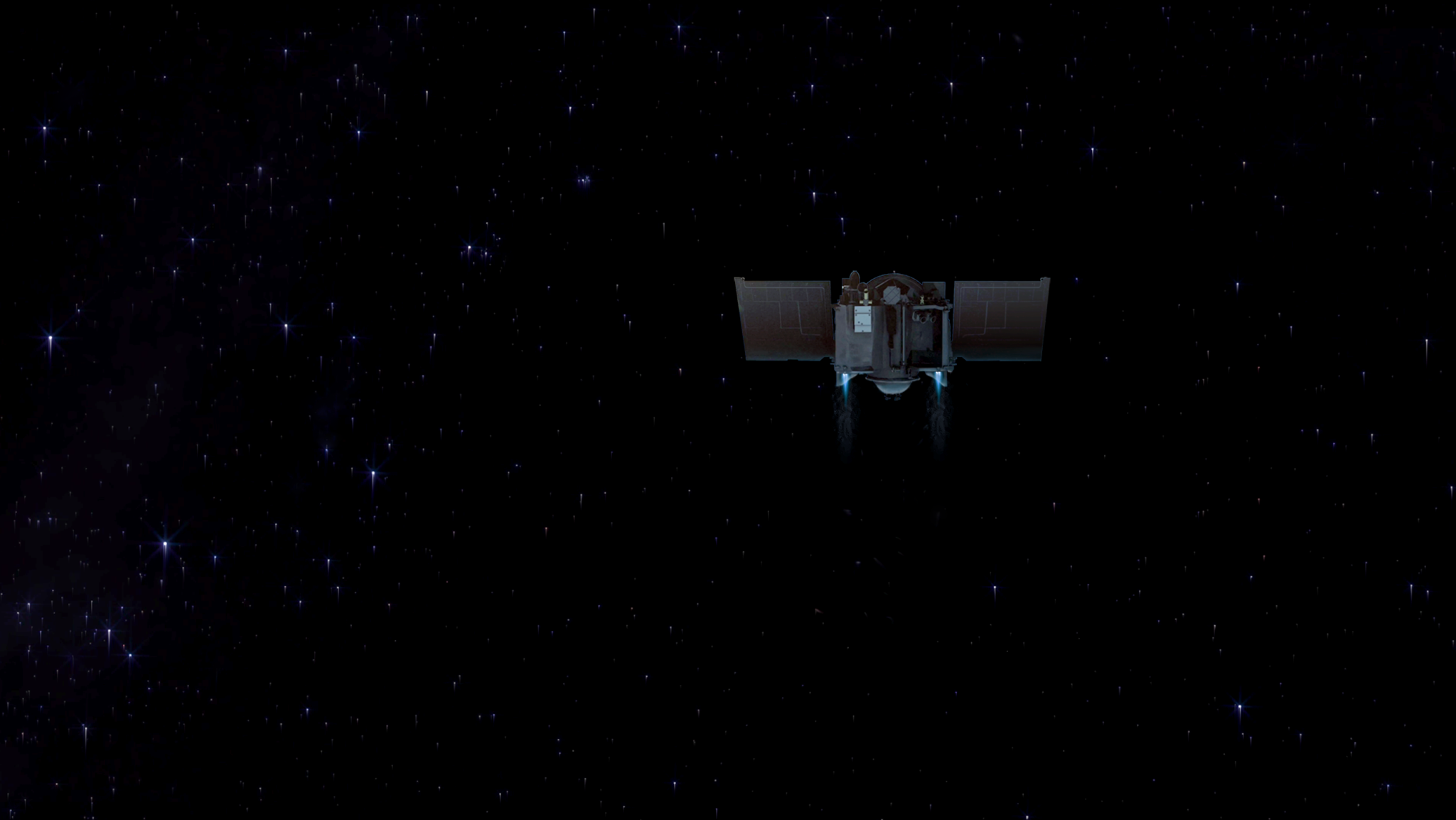New tracking data confirms that NASA’s OSIRIS-REx spacecraft successfully completed its second Deep Space Maneuver (DSM-2) on June 28. The thruster burn put the spacecraft on course for a series of asteroid approach maneuvers to be executed this fall that will culminate with the spacecraft’s scheduled arrival at asteroid Bennu on Dec. 3.
The DSM-2 burn, which employed the spacecraft’s Trajectory Correction Maneuver (TCM) thruster set, resulted in a 37 miles per hour (16.7 meters per second) change in the vehicle’s velocity and consumed 28.2 pounds (12.8 kilograms) of fuel.
Tracking data from the Deep Space Network provided preliminary confirmation of the burn’s execution, and the subsequent downlink of telemetry from the spacecraft shows that all subsystems performed as expected.
DSM-2 was OSIRIS-REx’s last deep space maneuver of its outbound cruise to Bennu. The next engine burn, Asteroid Approach Maneuver 1 (AAM-1), is scheduled for early October. AAM-1 is a major braking maneuver designed to slow the spacecraft’s speed from approximately 1,130 to 320 miles per hour (506.2 to 144.4 meters per second) relative to Bennu and is the first of four asteroid approach maneuvers scheduled for this fall.
NASA’s Goddard Space Flight Center in Greenbelt, Maryland, provides overall mission management, systems engineering and the safety and mission assurance for OSIRIS-REx. Dante Lauretta of the University of Arizona, Tucson, is the principal investigator, and the University of Arizona also leads the science team and the mission’s observation planning and processing. Lockheed Martin Space in Denver built the spacecraft and is providing spacecraft flight operations. Goddard and KinetX Aerospace are responsible for navigating the OSIRIS-REx spacecraft. OSIRIS-REx is the third mission in NASA’s New Frontiers Program. NASA’s Marshall Space Flight Center in Huntsville, Alabama, manages the agency’s New Frontiers Program for its Science Mission Directorate in Washington.
Original Maneuver Update: June 28, 2018
OSIRIS-REx Executes Second Deep Space Maneuver
NASA’s OSIRIS-REx spacecraft executed its second Deep Space Maneuver today, which put the spacecraft on course for its scheduled arrival at the asteroid Bennu in December. The mission team will continue to examine telemetry and tracking data as they become available and will have more information on the results of the maneuver over the next week.
Media contact: Nancy N. Jones
NASA’s Goddard Space Flight Center, Greenbelt, Md.


























